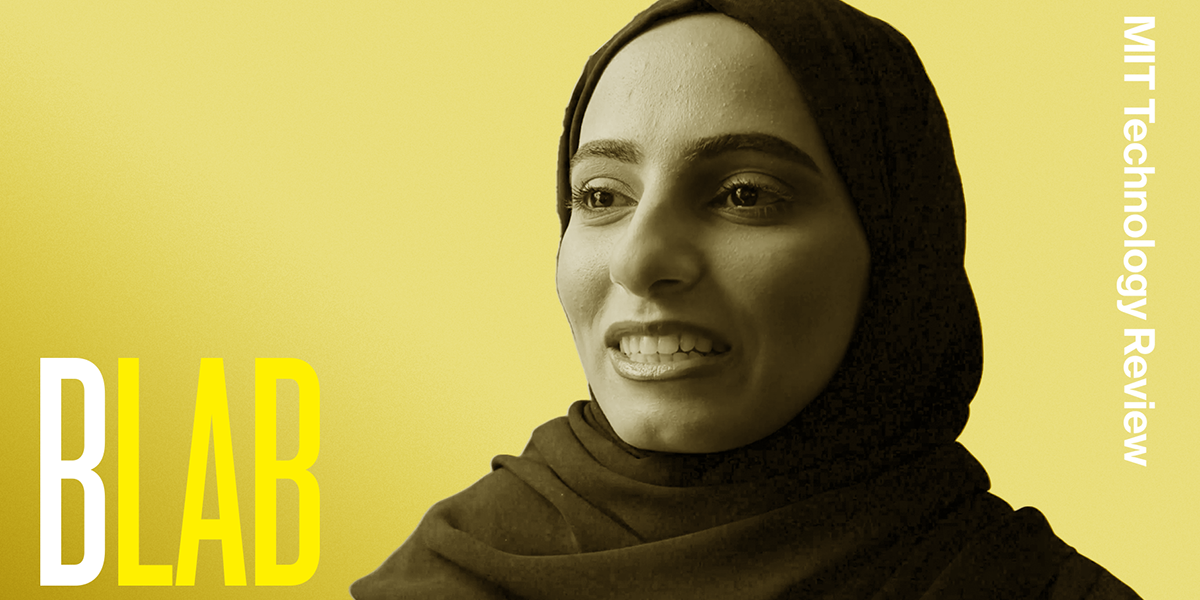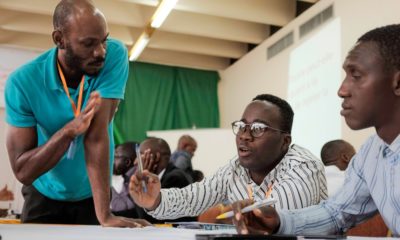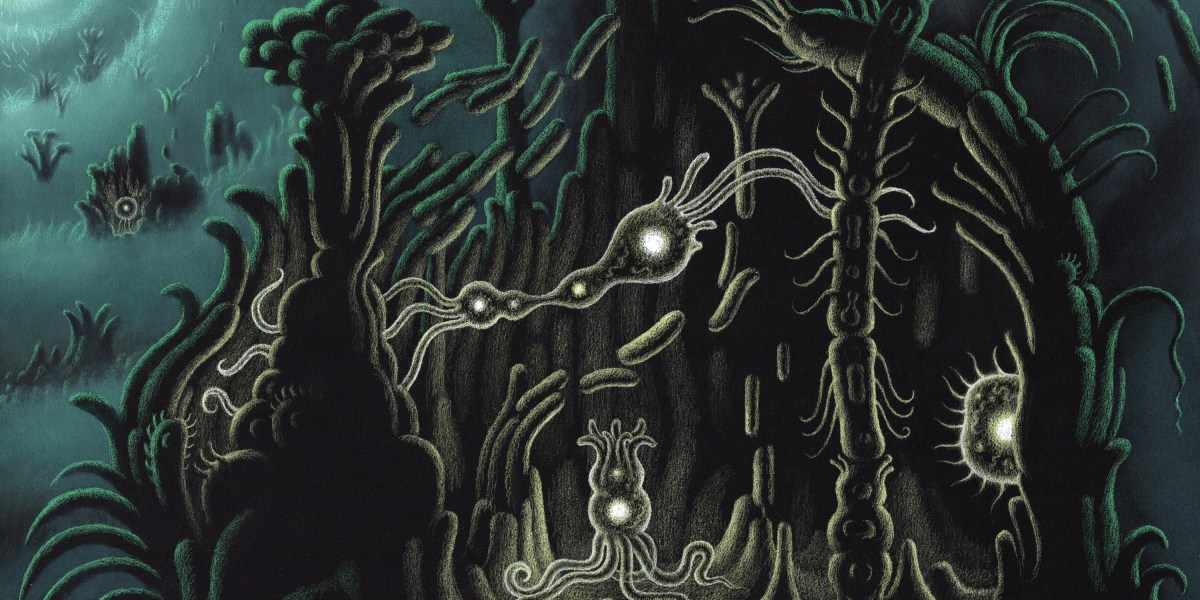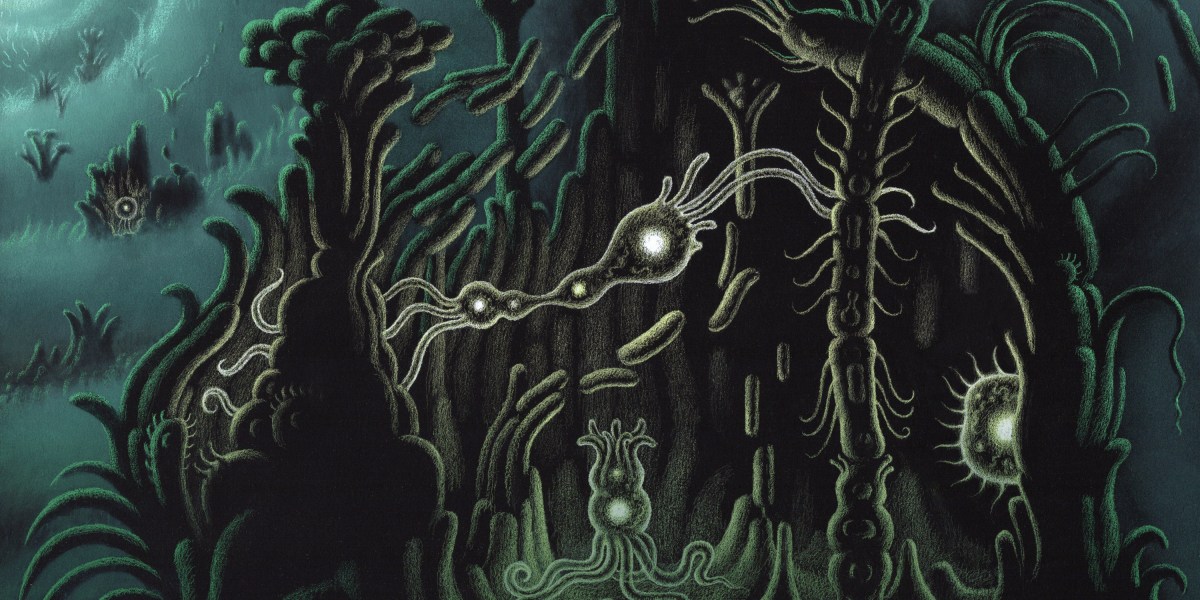Tech
Mapping the atmosphere on Mars can help advance science on our own planet
Published
2 years agoon
By
Drew Simpson
The Hope probe has three main objectives, the first is to understand the lower Martian atmosphere and its weather and climate. Yousuf continues, “The second objective is to correlate the lower atmosphere conditions with the upper atmosphere to explain how weather changes the escape of hydrogen and oxygen. And the final objective that we have is to understand the structure and variability of hydrogen and oxygen in the upper atmosphere and why Mars is losing them into space.”
The focus on space for the UAE comes at an important time as mapping Mars will contribute to the work of not just the knowledge economy of the UAE, but advance science for the whole world. “The UAE is basically investing in space, as investing in the space sector means investing in the human capital towards a better future for all,” says Yousuf.
This episode of Business Lab is produced in association with the UAE Pavilion Expo 2020 Dubai.
Show notes and references
Meet the Emirati engineers of Hope Probe Mars Mission, Gulf News, February 10, 2021
Full transcript:
Laurel Ruma: From MIT Technology Review, I’m Laurel Ruma. And this is Business Lab. The show that helps business leaders make sense of new technologies coming out of the lab and into the marketplace.
Our topic today is the Emirates Mars Mission, also known as the Hope Probe. Hope aims to be the first probe to provide a complete picture of the Martian atmosphere and its layers. The data collected by Hope will help answer key questions about the global Martian atmosphere and the loss of hydrogen and oxygen gases into space over the span of one Martian year.
Two words for you, space data.
My guest today is Maryam Yousuf, who is a data analyst for the Emirates Mars Mission.
This podcast is produced in association with UAE Pavilion Expo 2020 Dubai.
Welcome, Maryam.
Maryam: Hi, Laurel. Thank you for having me.
Laurel: To begin with, I want to congratulate you and your team. The United Arab Emirates is the fifth country in history to reach Mars and only the seventh in the world to reach the orbit of another planet. And to top it all off, the performance of the spacecraft is exceeding expectations. What does this mean for the UAE? And what kind of impact is it having on the UAE’s aspiring scientists?
Maryam: Thank you for the congratulations. And it’s for everyone, I think, having this mission to go to Mars and get the unique data that we have. Hope Probe is the vision of the late founder of the Emirates, Sheikh Zayed bin Sultan Al Nahyan, where he envisioned the UAE leading in the sector one day. One of the predominant project goals is developing the science and technology sectors within the UAE, in terms of capacity building and forging new pathways for the younger generations in research and development in the natural sciences domains, as they lay the foundation for any space exploration initiative in the future.
Laurel: That is very inspiring. The UAE’s Mohammed Bin Rashid Space Center with the international Mars science community is defining the objectives for the mission. What are those objectives and how will they further international goals to understand Mars?
Maryam: The Emirates Mars Mission will be the first mission to provide the full global picture of the Martian atmosphere. So three scientific objectives. The first objective is to characterize the Martian lower atmosphere to understand the climate dynamic and the global weather map. The second objective is to correlate the lower atmosphere conditions with the upper atmosphere to explain how weather changes the escape of hydrogen and oxygen. And the final objective that we have is to understand the structure and variability of hydrogen and oxygen in the upper atmosphere and why Mars is losing them into space.
Laurel: No small feats. These are big goals, for sure. Hope aims to provide the first comprehensive picture of Mars’ climate and atmosphere. Hope’s unique 25-degree elliptical orbit enables it to collect data and high-resolution images of the planet’s atmosphere every 225 hours or 9.5 days. What data is the Hope Probe collecting? How does it actually collect it?
Maryam: We have three instruments on board of Hope Probe. Two are studying the lower atmosphere and one is studying the upper atmosphere. If we speak about those that are studying the lower atmosphere, we have the Emirates Exploration Imager or EXI, which is a digital camera that is capable of taking 12-megapixel images while maintaining the radiometric calibration needed for the detailed scientific analysis. It will capture high resolution images of Mars, which is the RGB. And then it will measure optical depth of water ice at the range of 305 to 335 nanometers. And it will also measure the abundance of ozone at the range of 245 to 275 nanometers. All this is basically the ultraviolet bands.
The second instrument, which is the Emirates Mars Infrared Spectrometer or EMIRS, collects its data from the lower atmosphere. It is an interferometric thermal infrared spectrometer that will give a better understanding of the energy balance in the current Martian climate by characterizing the state of the lower atmosphere and the processes that are driving the global circulation. It’ll measure both the surface and the atmospheric temperatures, as well as the optical depths of water ice, and dust, and the abundance of water vapor. All of this will be measured from 6 to 40 plus micrometers.
For the upper atmosphere, we have the final instrument, which is the Emirates Mars Ultraviolet Spectrometer, which is EMUS. It is a far ultraviolet spectrometer that will measure oxygen and carbon monoxide and the thermosphere, and then it will measure the variability of the hydrogen and oxygen and the upper atmosphere.
Laurel: That absolutely is comprehensive. It will have a really good idea of a map of Mars from everything, from the surface to the atmosphere.
Maryam: Yeah.
Laurel: As a data analyst on the Mars Probe, what is your job like? How do you analyze so much data, and what are you looking for?
Maryam: For me personally, I only use EMIRS data for now. I basically study the impact of varying atmosphere conditions to the lower atmosphere on the out thermo-physical properties, on the Martian surface. And the thermo-physical properties are the properties that affect the energy budget itself.
All the instruments that we have on board of the Hope Probe are built on heritage data, which means we built the instruments based on the instruments used during previous Mars missions. When it comes to EMIRS specifically, we can use data from the Thermal Emission Spectrometer (TES), which was on board of the Mars Global Surveyor and before the launch and so on, I used to build my code and models using TES data. Now I basically use EMIRS instead of TES.
Laurel: That’s pretty exciting. You came to the mission itself as a recent graduate with a background in biomedical engineering and now you’re exploring space data from Mars. How have you been able to use your own analytic skills to make that transition?
Maryam: It was very challenging, but I like to challenge myself, and I like to seize any opportunity that is presented to me. So when this opportunity was there, I was like, why not? Because everything that we need to know, we can learn it from experts or we can learn it online. I challenged myself by learning programming, which is Python language, through online courses and online sources available that we can get our hands on. And then when it comes to the science, the space science in particular, the Emirates Mars mission was built on a knowledge transfer program. So we have experts from the United States that monitor the project that we’re working on. So, I have mentors that teach me about all this amazing space science that relates to Mars as well.
Laurel: That is amazing because this data will actually help the entire planet address climate change. Correct?
Maryam: I wouldn’t say there is a known correlation between earth and Mars. But Mars, billions of years ago, had a very similar atmosphere to earth. It had a warm, wet, and thick atmosphere that was capable of accommodating life. Now it’s basically dry, cold, and it has a very thin atmosphere. When we understand the evolution and what’s currently happening to Mars that might aid us in answering questions like, what happened and what could happen to our own planet. So yeah, I can’t really pinpoint the correlation between both the planets, but exploring other planets might help us in understanding our own planet.
Laurel: That’s a very good point for clarification. Thank you. The Emirates Mars Mission is unique, in that the troves of data collected by Hope are being released to the public. So that means anyone — me, our listeners, and more importantly, scientists based in more than 200 universities and research institutes globally — can go to the Mission’s website and register to access the data. Why is this important to the Mission, that all of the data be available at this scale?
Maryam: As a team, we have our objectives and hypothesis that we want to achieve or confirm. And when we share the data with everyone, they add on their knowledge and perspective to our current understanding. This contributes to a more knowledge-based economy and fosters the science community’s capabilities as a collective. This step was taken to encourage the science community to break the barriers and work together for the greater good.
Laurel: Releasing all of this data in an open way and sharing it is certainly going to be exciting to young scientists and engineers and people around the world who are perhaps looking for different kinds of data sets to experiment with. What do you think it means to do this in such a collaborative way?
Maryam: A lot of things come from this. If we talk about the UAE community itself, we do a lot of outreach activities here, and we get approached by the youth and even researchers within the UAE that have used the data itself for their own projects or research. So that’s one of the program objectives is basically to encourage more people to be involved in the STEM fields and so on. Another thing is when we go to conferences and other people will come to us and they basically want to collaborate, and they want to make a connection between their own projects and our projects and basically the objectives or whatever we’re seeing with the data. For example, maybe they had a hypothesis about it and they want to confirm it through our data because we have such unique data. So that’s really exciting. And the more we see people are into using our data, we basically want to produce the data as soon as we can.
Laurel: To keep that excitement going. Yeah.
Maryam: Yep.
Laurel: Before Hope even arrived at Mars, the probe was gathering valuable data. In November 2020, the European spacecraft, BepiColombo, was headed to Mercury. Both BepiColombo and Hope instruments were facing each other, so scientists took the opportunity to measure the amount of hydrogen between the two probes. What other unexpected opportunities has the mission encountered?
Maryam: Another observation that we haven’t put our mind into is basically with the EMUS instrument. The EMUS instrument is very sensitive when it comes to the EUV, the extreme ultraviolet bands. So this basically allows us to see the discrete Aurora and this is basically not from our objectives. From about 400 observations that we’ve seen, we saw discrete Aurora more than 60% of the time. And that wasn’t an expectation that we had or something any other mission has seen before. So, yeah, that was exciting for us.
Laurel: Speaking of other observations, the Hope Probe has made a number of them, right? With the Martian atmospheric phenomenon, including discrete aurora on Mars’ nightside, remarkable concentrations of oxygen and carbon monoxide, and never-before seen images of Martian dust storms. When you see this data and the images come in, which one of these, or perhaps there are other events, has caused everyone to sit up and say, “Wow, that is from Mars. No one’s ever seen that before. And we’re the first ones.”
Maryam: I’d have to speak about myself on this one. Personally, I find dust storms very fascinating. One, because I live in a country that has a tropical desert environment, which means dust storms are very common here. Every time it becomes very dusty here, I wonder if it’s the same thing that’s happening on Mars atmosphere or not. But if I speak about the team, I can tell you that we see all observations of value and impact.
Laurel: Oh, I’m sure. How is the success of Hope fueling other space exploration initiatives by the UAE? Because this has been successful, what else is possible?
Maryam: The Emirates Mars Mission is just the beginning of exploring the frontiers of space. Hope Probe is the gateway to space exploration in the UAE. So currently the UAE is working on multiple initiatives in the space sector, such as the UAE Astronaut program, which prepares Emirate astronauts for scientific space exploration missions. And the new Emirati interplanetary mission, which involves an expedition to the orbit of Venus followed by an exploration of the asteroid belt, which is beyond Mars. And then in addition, we have the Emirates Lunar Mission that is launching Rashid rover by the end of this year. So that’s really exciting for us. The UAE is basically investing in space, as investing in the space sector means investing in the human capital towards a better future for all.
Laurel: Maryam, thank you very much for joining us today on Business Lab.
Maryam: Thank you for having me.
Laurel: That was Maryam Yousef, a data analyst for the Emirates Mars Mission, who I spoke with from Cambridge, Massachusetts, the home of MIT and MIT Technology Review, overlooking the Charles River.
That’s it for this episode of Business Lab. I’m your host, Laurel Ruma. I’m the director of Insights, the custom publishing division of MIT Technology Review. We were founded in 1899 at the Massachusetts Institute of Technology. And you can find us in print, on the web, and at events each year around the world. For more information about us and the show, please check out our website at technologyreview.com.
This show is available wherever you get your podcasts. If you enjoyed this episode, we hope you’ll take a moment to rate and review us. Business Lab is a production of MIT Technology Review. This episode was produced by Collective Next. Thanks for listening.
This content was produced by Insights, the custom content arm of MIT Technology Review. It was not written by MIT Technology Review’s editorial staff.
You may like
-


The Role of Machine Learning in Data Science: Main Use Cases
-


The Download: how AI is changing science, and limits on White House contact with tech firms
-


Eric Schmidt: This is how AI will transform how science gets done
-


Massive Shakeup: Google Sends Shockwaves with Layoffs at Waze Mapping App
-


This technology could alter the entire planet. These groups want every nation to have a say.
-


The science behind AI-first transformations
Tech
The hunter-gatherer groups at the heart of a microbiome gold rush
Published
5 months agoon
12/19/2023By
Drew Simpson
The first step to finding out is to catalogue what microbes we might have lost. To get as close to ancient microbiomes as possible, microbiologists have begun studying multiple Indigenous groups. Two have received the most attention: the Yanomami of the Amazon rainforest and the Hadza, in northern Tanzania.
Researchers have made some startling discoveries already. A study by Sonnenburg and his colleagues, published in July, found that the gut microbiomes of the Hadza appear to include bugs that aren’t seen elsewhere—around 20% of the microbe genomes identified had not been recorded in a global catalogue of over 200,000 such genomes. The researchers found 8.4 million protein families in the guts of the 167 Hadza people they studied. Over half of them had not previously been identified in the human gut.
Plenty of other studies published in the last decade or so have helped build a picture of how the diets and lifestyles of hunter-gatherer societies influence the microbiome, and scientists have speculated on what this means for those living in more industrialized societies. But these revelations have come at a price.
A changing way of life
The Hadza people hunt wild animals and forage for fruit and honey. “We still live the ancient way of life, with arrows and old knives,” says Mangola, who works with the Olanakwe Community Fund to support education and economic projects for the Hadza. Hunters seek out food in the bush, which might include baboons, vervet monkeys, guinea fowl, kudu, porcupines, or dik-dik. Gatherers collect fruits, vegetables, and honey.
Mangola, who has met with multiple scientists over the years and participated in many research projects, has witnessed firsthand the impact of such research on his community. Much of it has been positive. But not all researchers act thoughtfully and ethically, he says, and some have exploited or harmed the community.
One enduring problem, says Mangola, is that scientists have tended to come and study the Hadza without properly explaining their research or their results. They arrive from Europe or the US, accompanied by guides, and collect feces, blood, hair, and other biological samples. Often, the people giving up these samples don’t know what they will be used for, says Mangola. Scientists get their results and publish them without returning to share them. “You tell the world [what you’ve discovered]—why can’t you come back to Tanzania to tell the Hadza?” asks Mangola. “It would bring meaning and excitement to the community,” he says.
Some scientists have talked about the Hadza as if they were living fossils, says Alyssa Crittenden, a nutritional anthropologist and biologist at the University of Nevada in Las Vegas, who has been studying and working with the Hadza for the last two decades.
The Hadza have been described as being “locked in time,” she adds, but characterizations like that don’t reflect reality. She has made many trips to Tanzania and seen for herself how life has changed. Tourists flock to the region. Roads have been built. Charities have helped the Hadza secure land rights. Mangola went abroad for his education: he has a law degree and a master’s from the Indigenous Peoples Law and Policy program at the University of Arizona.
Tech
The Download: a microbiome gold rush, and Eric Schmidt’s election misinformation plan
Published
5 months agoon
12/18/2023By
Drew Simpson
Over the last couple of decades, scientists have come to realize just how important the microbes that crawl all over us are to our health. But some believe our microbiomes are in crisis—casualties of an increasingly sanitized way of life. Disturbances in the collections of microbes we host have been associated with a whole host of diseases, ranging from arthritis to Alzheimer’s.
Some might not be completely gone, though. Scientists believe many might still be hiding inside the intestines of people who don’t live in the polluted, processed environment that most of the rest of us share. They’ve been studying the feces of people like the Yanomami, an Indigenous group in the Amazon, who appear to still have some of the microbes that other people have lost.
But there is a major catch: we don’t know whether those in hunter-gatherer societies really do have “healthier” microbiomes—and if they do, whether the benefits could be shared with others. At the same time, members of the communities being studied are concerned about the risk of what’s called biopiracy—taking natural resources from poorer countries for the benefit of wealthier ones. Read the full story.
—Jessica Hamzelou
Eric Schmidt has a 6-point plan for fighting election misinformation
—by Eric Schmidt, formerly the CEO of Google, and current cofounder of philanthropic initiative Schmidt Futures
The coming year will be one of seismic political shifts. Over 4 billion people will head to the polls in countries including the United States, Taiwan, India, and Indonesia, making 2024 the biggest election year in history.
Tech
Navigating a shifting customer-engagement landscape with generative AI
Published
5 months agoon
12/18/2023By
Drew Simpson
A strategic imperative
Generative AI’s ability to harness customer data in a highly sophisticated manner means enterprises are accelerating plans to invest in and leverage the technology’s capabilities. In a study titled “The Future of Enterprise Data & AI,” Corinium Intelligence and WNS Triange surveyed 100 global C-suite leaders and decision-makers specializing in AI, analytics, and data. Seventy-six percent of the respondents said that their organizations are already using or planning to use generative AI.
According to McKinsey, while generative AI will affect most business functions, “four of them will likely account for 75% of the total annual value it can deliver.” Among these are marketing and sales and customer operations. Yet, despite the technology’s benefits, many leaders are unsure about the right approach to take and mindful of the risks associated with large investments.
Mapping out a generative AI pathway
One of the first challenges organizations need to overcome is senior leadership alignment. “You need the necessary strategy; you need the ability to have the necessary buy-in of people,” says Ayer. “You need to make sure that you’ve got the right use case and business case for each one of them.” In other words, a clearly defined roadmap and precise business objectives are as crucial as understanding whether a process is amenable to the use of generative AI.
The implementation of a generative AI strategy can take time. According to Ayer, business leaders should maintain a realistic perspective on the duration required for formulating a strategy, conduct necessary training across various teams and functions, and identify the areas of value addition. And for any generative AI deployment to work seamlessly, the right data ecosystems must be in place.
Ayer cites WNS Triange’s collaboration with an insurer to create a claims process by leveraging generative AI. Thanks to the new technology, the insurer can immediately assess the severity of a vehicle’s damage from an accident and make a claims recommendation based on the unstructured data provided by the client. “Because this can be immediately assessed by a surveyor and they can reach a recommendation quickly, this instantly improves the insurer’s ability to satisfy their policyholders and reduce the claims processing time,” Ayer explains.
All that, however, would not be possible without data on past claims history, repair costs, transaction data, and other necessary data sets to extract clear value from generative AI analysis. “Be very clear about data sufficiency. Don’t jump into a program where eventually you realize you don’t have the necessary data,” Ayer says.
The benefits of third-party experience
Enterprises are increasingly aware that they must embrace generative AI, but knowing where to begin is another thing. “You start off wanting to make sure you don’t repeat mistakes other people have made,” says Ayer. An external provider can help organizations avoid those mistakes and leverage best practices and frameworks for testing and defining explainability and benchmarks for return on investment (ROI).
Using pre-built solutions by external partners can expedite time to market and increase a generative AI program’s value. These solutions can harness pre-built industry-specific generative AI platforms to accelerate deployment. “Generative AI programs can be extremely complicated,” Ayer points out. “There are a lot of infrastructure requirements, touch points with customers, and internal regulations. Organizations will also have to consider using pre-built solutions to accelerate speed to value. Third-party service providers bring the expertise of having an integrated approach to all these elements.”
